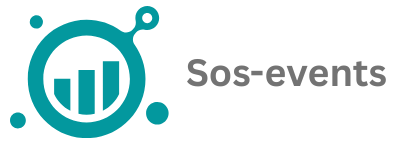In the chaotic world of project management, a well-organized project board can be the difference between a smooth sail and a shipwreck. Imagine a board that not only keeps tasks in check but also sparks joy—like Marie Kondo for your workflow. With the right organization, teams can transform confusion into clarity, making projects feel less like a marathon and more like a leisurely stroll in the park.
Table of Contents
ToggleUnderstanding Project Board Organization
Project board organization serves as a crucial element in managing successful projects. A well-structured board simplifies communication among team members and enhances overall efficiency.
Definition and Purpose
A project board is an organized visual tool that displays project tasks, responsibilities, and timelines. Its primary purpose is to provide a clear overview of project progress and hold team members accountable. Boards often utilize methods like Kanban or Scrum, allowing team members to visualize workflow and prioritize tasks effectively. Utilizing a project board also fosters collaboration, ensures everyone stays informed, and boosts motivation by tracking achievements.
Importance in Project Management
Effective project board organization promotes transparency among team members. It encourages participation by making tasks visible and deadlines clear. Structured boards can identify bottlenecks early in the process, enabling quick resolution and smoother progress. Additionally, they can enhance focus by prioritizing high-impact tasks, ensuring key objectives are met. A well-maintained project board not only streamlines communication but also contributes to a culture of productivity and accountability within the team.
Key Components of Project Board Organization

An organized project board incorporates essential components that enhance functionality and clarity. Understanding these key elements promotes effective management and collaboration within teams.
Roles and Responsibilities
Clearly defined roles and responsibilities advance accountability within the team. Assigning specific tasks to team members ensures each individual knows their contributions. Clarity in roles helps reduce overlap and confusion. Project managers can outline primary responsibilities, leading to optimal task ownership. Team members feel empowered when aware of their duties. Regular check-ins about responsibilities encourage ongoing collaboration and adaptability.
Board Structure
A well-crafted board structure serves as the foundation for project management. Visual layouts, such as Kanban or Scrum, can simplify the tracking of tasks. Organizing tasks into categories based on priority enhances workflow. Columns usually represent stages of task completion, from “To Do” to “Done.” Each task card displays key information, ensuring all details are visible. Adopting this structure boosts communication and motivates team members to achieve goals more efficiently.
Best Practices for Effective Project Board Organization
Effective project board organization relies heavily on clear communication and structured decision-making processes.
Clear Communication Strategies
Establishing communication norms helps teams share information efficiently. Utilize visual aids on the project board to highlight progress and deadlines. Regular updates foster transparency and keep team members informed about changes. Encourage open channels for feedback to address any concerns promptly. Use simple language to ensure messages are easily understood. Shared platforms for document management streamline communication and reduce misunderstandings. Frequent check-ins allow team members to voice challenges, promoting a collaborative environment.
Decision-Making Processes
Incorporating a structured decision-making framework enhances project outcomes. Identify specific criteria for evaluating options to guide discussions. Assign decision-making roles based on expertise to streamline the process. Gather team insights to ensure that perspectives are considered and valued, which leads to more informed choices. Utilizing consensus-building techniques fosters a unified direction and commitment to decisions.
Manage timelines for decisions to keep the project moving forward. Document decisions on the project board to maintain clarity and accountability.
Common Challenges and Solutions
Project boards may present challenges impacting team effectiveness. Addressing these obstacles supports smoother project execution.
Misalignment of Goals
Misalignment of goals impacts task priorities. Disparate objectives can lead to confusion among team members. Regular check-ins ensure everyone understands project intentions. Utilizing a shared vision statement fosters unity and clarity. Establishing measurable outcomes aligns tasks across the board. Tools like OKRs (Objectives and Key Results) provide frameworks for maintaining focus. Transparency in communicating project goals enhances accountability. Tracking progress against these objectives keeps teams on the same page.
Conflict Resolution
Conflict often arises in diverse teams. Differences in opinions on task execution can lead to friction. Instituting conflict resolution processes aids in addressing issues promptly. Structured discussions encourage open dialogue about grievances. Implementing mediation protocols can clarify misunderstandings. Establishing an atmosphere of trust promotes collaborative problem-solving. Documenting resolutions on the project board maintains transparency. Regular reflection sessions help identify recurring issues, facilitating proactive solutions. Engaging team members in resolution efforts boosts morale and strengthens relationships.
Tools and Resources for Project Board Organization
Effective project board organization relies on appropriate tools and resources to streamline workflows and enhance productivity. Various solutions offer functionalities that cater to different aspects of project management.
Software Solutions
Project management software fosters collaboration and task management. Tools like Trello and Asana provide visual layouts for tracking tasks and responsibilities. Team leaders can assign tasks and monitor progress through these platforms. Solutions such as Microsoft Project offer advanced features for scheduling and resource allocation. Not all tools suit every team, so understanding specific project requirements aids in selection. Effective software enhances communication by centralizing information and progress tracking. Many solutions offer integrations with communication tools, consolidating project-related discussions.
Training and Workshops
Training sessions and workshops improve project board organization skills. Various providers offer targeted workshops that focus on Agile methodologies, Kanban, or Scrum frameworks. Participants learn to utilize project boards effectively, enhancing collaboration and workflow. Expert-led training equips teams with strategies to maintain clarity and transparency throughout the project lifecycle. Regular workshops can spotlight best practices and refine processes. Creating a culture of continuous learning fosters adaptability to changing project needs. Investing in team training supports long-term success and boosts overall productivity.
A well-organized project board is essential for fostering collaboration and driving project success. By implementing structured practices and utilizing effective tools, teams can streamline their workflows and enhance communication. This clarity not only boosts productivity but also cultivates a positive team environment where members feel engaged and accountable.
As teams embrace continuous learning and adaptability, they’ll find that a well-maintained project board serves as a powerful asset. It empowers them to tackle challenges head-on and navigate the complexities of project management with confidence. Ultimately, prioritizing organization can transform the project experience into one that’s both enjoyable and efficient.




